#star wars occultation comic
Explore tagged Tumblr posts
Text
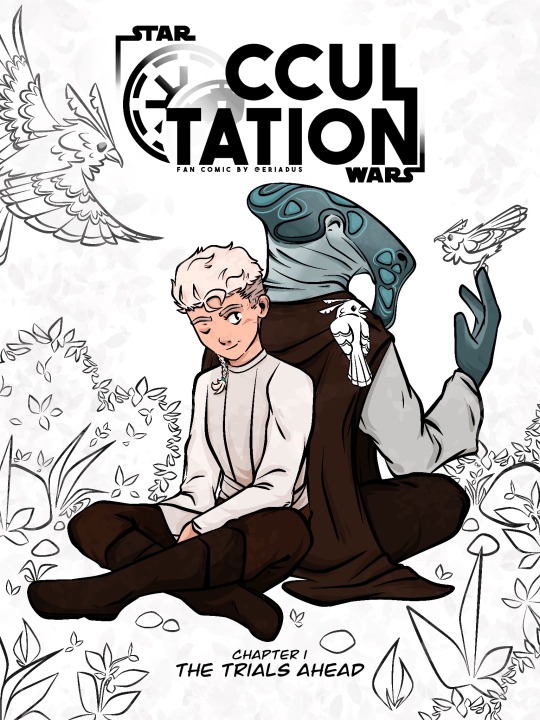
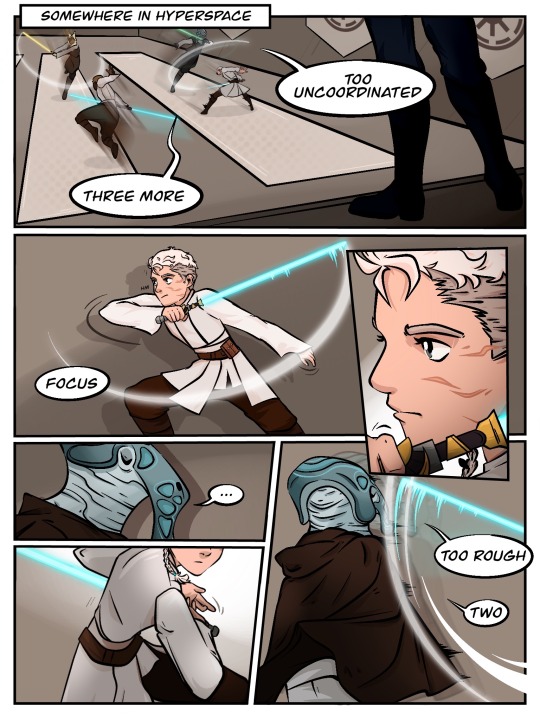
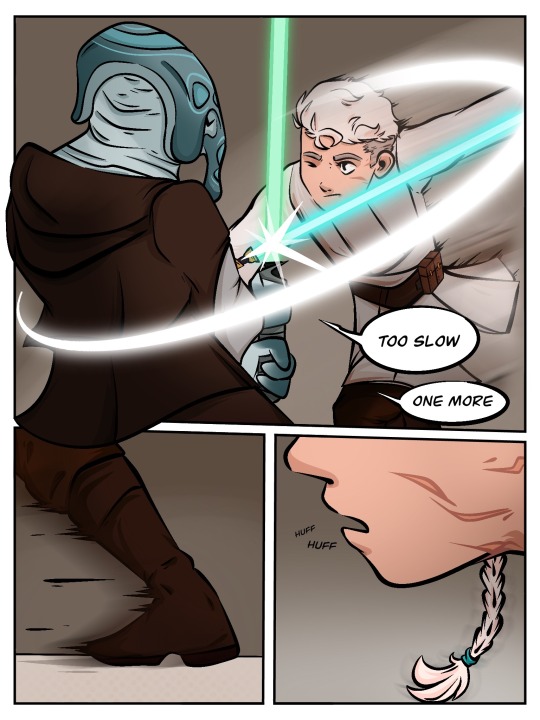

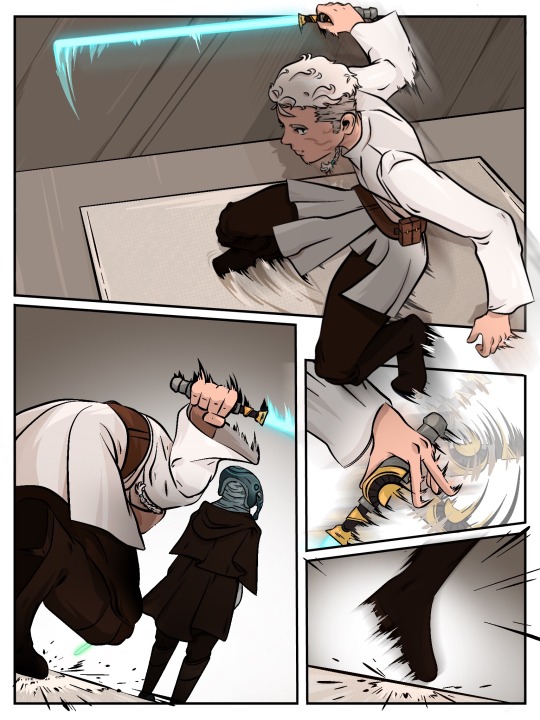


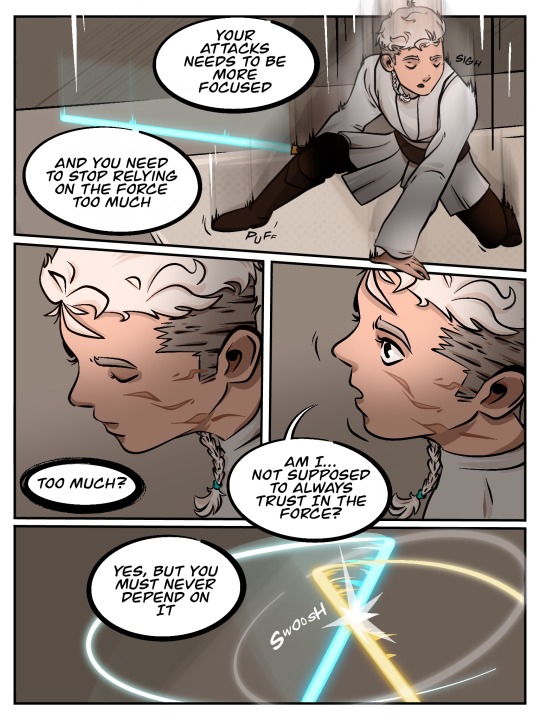



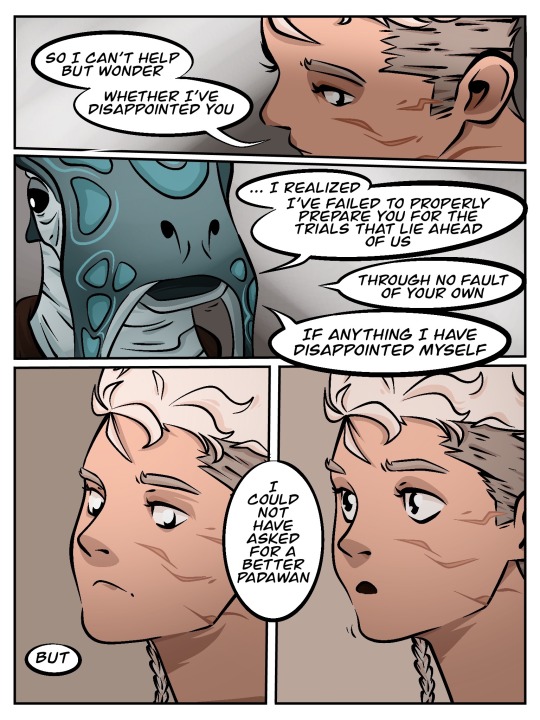
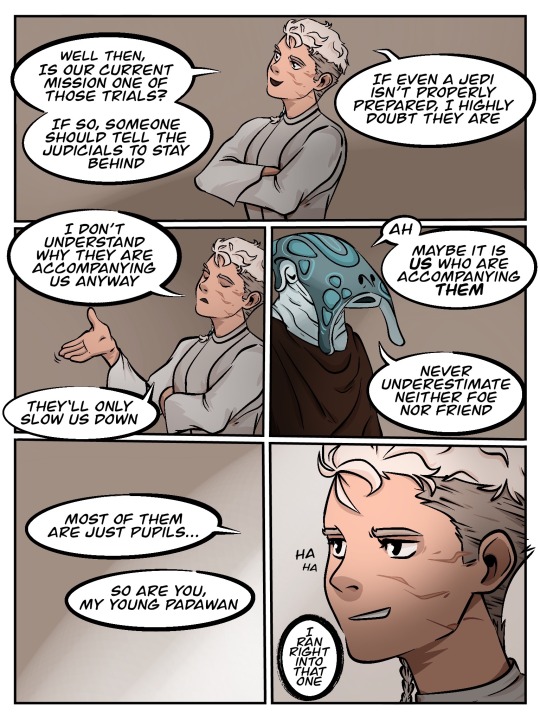
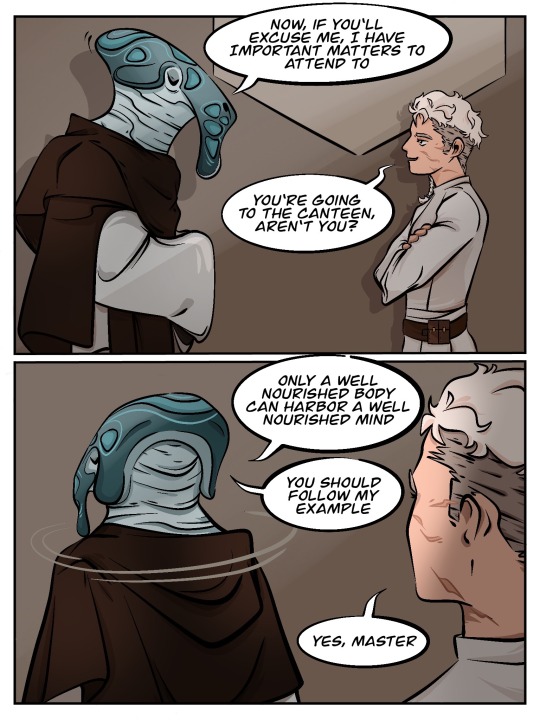

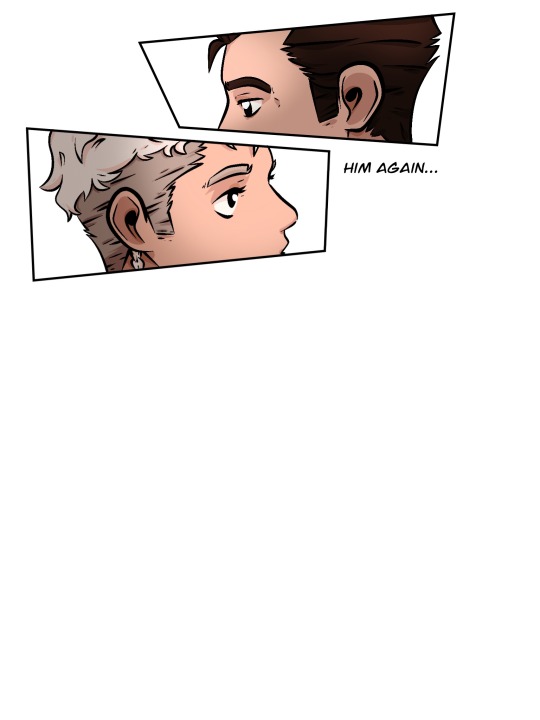
#what on earth is up with this 10 images limit on the app whose idea was that#anyway I had to separate the chapter into two because it would just have been way too long otherwise so I apologize for the awkward cut 🙃#star wars#star wars fanart#Star Wars fan comic#fanart#digital illustration#artists on tumblr#star wars oc#jedi oc#jedi#digital art#padawan#star wars occultation comic#since Star Wars Eclipse was already taken the game better be good 😤#mine#long post
74 notes
·
View notes
Text

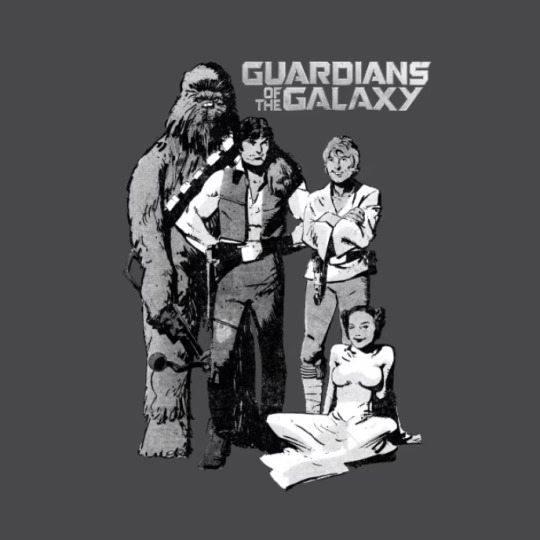
https://www.teepublic.com/t-shirt/132481-space-opera
#comics#sci-fi#occult#teepublic#demon#shirt#tee#t-shirt#club megatrip#devil#Star Wars#guardians of the galaxy
21 notes
·
View notes
Text
The Drive Home From Tadfield (based on @vavoom-sorted-art's comic
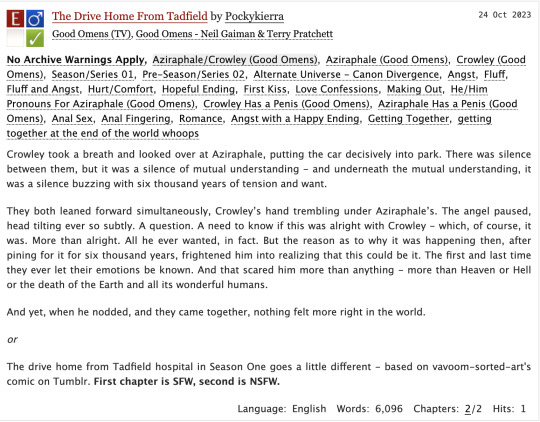
Go check out her comic, her art is so lovely! Both chapters out now.
The first chapter is SWF, the second is all NSFW, for anyone who wants to skip it/skip right to it 😏 Thank you @vavoom-sorted-art for letting me write a fic about your art! Here's a little sneak peak of Chapter One:
For a good few minutes, they fell into silence. They watched the setting sun pour beautiful light through the Bentley’s windows - yet another thing Crowley would miss when the world was gone. A demon wasn’t supposed to admire a lovely sunset - and certainly not a lovely angel - yet, on numerous occasions, he had found himself doing just that. Appreciating the beauty of the world he lived in.
The world that would soon destroy itself through divine and occult influences. Wasn’t that wonderful? All the things Crowley and Aziraphale loved - the people, the drinks, the food, the sunsets, the cars - gone. Turned to dust before their eyes.
Aziraphale would scold him for it, but Crowley couldn’t help but keep glancing at him from the corner of his eye. With his glasses, it was a difficult task, but he managed for a good few minutes without cluing Aziraphale that his eyes weren’t entirely on the road. He could see thoughts and ideas churning in the angel’s head, each twitch of the nose or flicker of the eye a new one - but from the dour expression on his face, none were leading anywhere.
Crowley supposed that was better than what he was doing, which was focusing entirely on Aziraphale and not on ways to fix the up-and-coming Apocalypse. It was hard not to be when the angel looked so beautiful in the oranges and reds of the setting sun, his pale hair turned to fire and his eyes sparkling like stars in the burning light. He was - as the angel had said himself - ethereal. Wondrously, ridiculously radiant, and so full of light that Crowley could bask in for the rest of their days. Even if said days were now quite limited.
Crowley’s jaw tensed, his teeth grinding together in a way that would have been painful for the average human. He had been trying not to think of it, focusing instead on losing his car and his humans and his alcohol, but deep down, he knew what the end of days truly meant losing - Aziraphale. No more dinners at the Ritz watching the angel savor every bite, no more late-night drinking sessions at the bookshop, and no more Arrangement. They would be - at best - separated for eternity and - at worst - forced to fight in the coming war.
The Bentley swerved violently in reaction to Crowley’s thoughts; the angel beside him let out a tiny, barely-there gasp but said nothing about the sudden veer. Crowley glanced over at him, a pain like nothing he had felt before aching in his chest. He couldn’t fight Aziraphale. He wouldn’t. He would sooner throw that ridiculous tartan thermos of holy water he had hidden away onto himself - which, contrary to what Aziraphale thought, had never been the plan. But he would do it in a heartbeat for the angel beside him.
From the corner of his eye, Crowley could see Aziraphale was still staring intently out the window, now looking to be thinking even harder about something. What it could be was hard to tell in the fading light of the sun, now mostly disappeared beyond the horizon - setting for, possibly, one of the last times.
Just another reminder of their fading moments together.
Unable to resist, fueled by panic and desperation, Crowley reached out and palmed Aziraphale’s thigh, grasping it like a lifeline. He was a demon weak for the pleasures in life, and his chances to have them were dwindling to nothing. Crowley and Aziraphale had spent years orbiting each other, never getting close enough to come together - and he was tired of it. He had gotten a taste of that tempting closeness earlier when Aziraphale had dared to call him nice, and Crowley pushed him up against the wall in retaliation. It was meant to be threatening, but from the way Aziraphale’s eyes had lingered on him as their bodies pushed together, it had been anything but. Thinking about anything else since then had been difficult - besides, of course, the oncoming death of the Earth.
Crowley figured - best to do something now while there was still something to do.
His hand tensed on the Aziraphale’s thigh, fighting everything in his body to keep his face neutral as the angel stared at him and contemplated what he felt about this new development. Crowley didn’t want to pull his hand away, but he would if Aziraphale asked.
He would do anything for him.
Check out the story here!
#good omens#good omens 2#good omens fanfiction#aziracrow#ineffable husbands#crowley#aziraphale#good omens season 2#pkfanfics#fanfiction
132 notes
·
View notes
Note
oh good christ what did legends of tomorrow do? i know about the agatha show but i was gonna watch that show?
oh boy. off the top of my head:
only jewish actor playing the only jewish character on the show at the time played an ancestor of his own character (also jewish, the guy’s last name is literally stein) who was a serial killer that used the blood of his victims in an occult ritual (to resurrect a man who worked with nazis)
only jewish actor playing the only jewish character on the show at the time got shot in the back and killed by nazis during dctv’s “crisis on earth-x crossover,” which takes place in a world where the nazis won world war ii and all of the main hero characters from dc shows are nazis (and main universe eobard thawne is a mengele-style nazi scientist). this includes jewish coded kara zor-el. you get to see the star of david on his coffin as it’s lowered into his grave which is great representation. said actor publicly stated he would like to come back but was never asked. sorry zayde <3
at a different point in time they also had that character go undercover and sing for nazis for some reason. i don’t know why they did that
new jewish actor! this one is playing the definition of a nebby jewish stereotype! but he’s bisexual (maybe pansexual?) so it’s fine and nobody cares
the nebby jewish stereotype turns out to be an human-eating (potentially reptilian or insectoid but i don’t fully recall) alien in disguise. they are told they should have known he was an alien because his last name is green and all aliens are green. btw. but he’s bisexual (maybe pansexual?) so it’s fine and nobody cares
the show’s “perfect woman” who was the foundation for many “perfect woman clones” is a white goyishe blond lady. people said this was progressive because she’s sapphic (i think a lesbian).
character who is not jewish on the show but is in the comics works for the devil
they also redeem at least one (iirc two?) characters who worked for nazis. the show runner said he considered one of them to be as lovable as the main cast
and this doesn’t even include things like them having two separate black female characters who went into animalistic rages, a fan favorite character trying to pressure a muslim woman into eating bacon, the nebby jewish stereotype complimenting someone’s nordic features, and the genuinely sickening scene where they go back to the civil war era and the only female black character in the cast has to watch a slave be whipped. so the real question is what DIDN’T legends of tomorrow do!
#antisemitism /#racism /#antiblackness /#i don’t even like. know what else to tag it is genuinely really astonishingly bad#not even getting into the caity lotz stuff#Anonymous
11 notes
·
View notes
Text
🦃 November Update 🍂
Salutations everyone! (Except for you, Biff. you know what you did)
Spooky season is over (sort-of) and that means it’s time for Autumn without the skeleton wars! I’ve been busy outlining Ghost Bricks 2, laying the ground work for Greed, and developing essay ideas! Speaking of which…
Nameless Raiders!
The first one is out and ready to read! If you’ve ever been bothered by the under-designed target dummies that pass for hostile bandits in most sandbox CRPGs, well boy do I have the article for you! Give it a read, and if you like it, Bunker Goblins get to vote monthly for what I write about next!
For Your Eyes Only!
While you aren’t reading Ghost Bricks volume 2 (because it isn’t out yet) here’s what I’ve been reading…
Petrograd, a pulpy soviet-era spy story set during WWI in the eponymous Russian city! It’s got everything you’d expect of a spy story plus great art and a pace that transitions from methodical to heart stopping right on cue.
Shadow Puppets, an in-progress (but very good) supernatural action webcomic for fans of mafia-type drama, the occult, and a hint of coming-of-age angst, which is just my speed. It’s being written and drawn by the incomparable @star-dragon-art, give her a follow~
Greed!
I’m making headway on Greed, a cowboy-western comic in my own grim narrative style! Macy-belle and Jessie Miller, a failed mailwoman and the barkeep that keeps her housed respectively, have designs! There’s still plenty to do before I actually start drawing panels (including designs for more characters and a few key environments) but who knows? Maybe I’ll get a burst of creative energy this month~
Lost and Found
Aaaaaaand that’s that! My college schedule isn’t getting any easier and I’m just coming off of The Sickness (thanks to Widget for keeping the place clean and the air filters working), but even with that bit of good fortune, we can only wait and see what time brings!
If you like what I write (books, essays, webcomics apparently) and want to see it as soon as it becomes available, give me a follow on Ko-fi.
See you next time, cowboy ^^
#update#announce#announcement#writing#writblr#webcomics#reading recommendations#writing community#indie author#essays
7 notes
·
View notes
Text
Wolverine 1000 (April 2011)
Various
Couple of programming notes up top: firstly, my reading order suggested that I read a comic called X-Men: True Friends at this point, but looking into it, it's in essence a comic that belongs to the whole Excalibur/Captain Britain spin-off world (which I have not been reading). It's also absolutely terrible and features Queen Elizabeth II as a child, but that's not reason enough for me to do a bunch of posts about it. Similarly the reading order proposes imminently reading a bunch of Namor stuff but I have also been skipping his whole...thing (I should probably add something to my pinned post about the stuff I don't consider to be X-Men comics and am not reading, huh), so, instead, it's endless Wolverine prequels, like with today's gimmickily titled Wolverine 1000, which collects half a dozen short and disparate Logan stories.

Two of them are set during the Second World War - which is what puts this book here in our reading chronology - and two of them are about werewolves, but there's no overarching theme. The first once has - as you can see above - some quite nice art but with a distractlingly complex way of drawing textures and backgrounds with cross-hatching of many different kinds. It has occult Nazis - always fun - and an early reference to the super-soldier "Weapon Plus" program that would eventually give rise to the Weapon X experiments on Wolverine (here he has the bone claws and the healing but not the adamantium), but my favourite thing about it is this Nazi woman calling him "bestie".

The second story is also about werewolves and is seared into my mind via Rafa Garres art, which I almost want to like but ultimately totally hate. This is probably a bigger discussion for another time but locating just the right amount of stylization in comics are is basically the whole conundrum, right? And Mr Garres has done something that's certainly interesting but is also practically impossible to look at.

What are the spatial relationships of any of these people to each other? How do their bodies work? Why has the art been dipped in tea? Every page is like this.

In amongst these bizarre distortions is a pretty unpleasant plotline about "Miss Jailbait" (charming) and some werewolves, but it's in places literally impossible to follow.

That leaves three much briefer stories, two of them light-hearted (one about a teenager meeting her idol, Wolverine, and another about Logan being used as an action movie star by some aliens) which are both fine, and one deeply dull and very short one where he kills some non-supernatural Nazis.

This is all very whatever and at the end of the day none of us have learned anything about Logan or anything, but sometimes it's fun to read these compilations of a bunch of different styles and ideas. I just hope I don't have to read a Rafa Garres comic again.
6 notes
·
View notes
Text
Star Wars: Darth Maul - Black White & Red #1 Preview
Star Wars: Darth Maul - Black White & Red #1 Preview #StarWarsDarthMaulBlackWhiteandRed #MARVEL #marvelcomics #comics #comicbooks #news #mcu #NCBD #comicbooknews #amazon #previews #reviews #starwars #darthmaul #maul #starwarscomics
Star Wars: Darth Maul – Black White & Red #1 Preview: DARTH MAUL STARS IN HIS VERY OWN HORROR BLOCKBUSTER! A prison ship – transporting a cult known as the FINAL OCCULTATION – goes offline, and DARTH MAUL is sent by PALPATINE to investigate. What he finds on board is the stuff of nightmares!!! It’s up to him to stop this profoundly dark and unstable force that wishes to bring chaos to the…
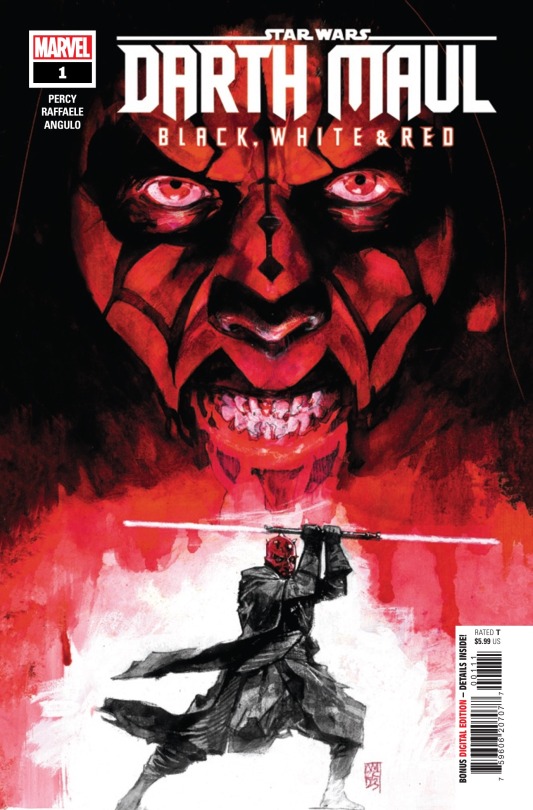
View On WordPress
#comic books#Darth Maul#Marvel#marvel comic previews#Marvel Comics#Marvel Previews#Previews#star wars#star wars comics#Star Wars: Darth Maul#Star Wars: Darth Maul - Black White & Red#Star Wars: Darth Maul - Black White & Red 1#Star Wars: Darth Maul - Black White & Red 1 Preview
7 notes
·
View notes
Text
some later acolyte thoughts:
+ darth plagueis aka hego damask ii my favourite fucked-up occult scientist, literally bred to be a sith, you utter bitch, welcome to the screen. i am becoming increasingly glad that all we got was the cameo because i'm holding the darth plagueis novel with a circle of salt around me so disney can't get at it.
- though that cameo makes this whole story kinda useless. it's a shaggy sith story. even moreso than i thought it would be. i'm taking mae's memory wipe as a half-win for my 'mae's going to die' prediction because who she was from 8-years-old onward did die.
+ cortosis is on television baby! not just the fuck-off big ascendant sword from the aphra comics, but part of top-level canon (don't try to tell me that's something left behind in legends no there are still obvious tiers of canon).
- can we stop with the whole 'omg the jedi are flawed that must mean that they're actually evil!!!111one' movement? 'what if one of you snaps?' says senator wearing-a-crimson-dawn-looking-pendant well sir it looks like you don't know the history of your own fucking government, which instituted sweeping changes at the last sith war (the result of one of them snapping. heeyyyy phanius/darth ruin) so that the jedi did not have access to armies, large-scale weaponry, etc. and that's at least the second time a schism like that's happened.
it's the senate. it's always the senate's fucking fault because this is star wars and it's always the government's fault. the senate is all 'oooh we should meddle with the jedi' the jedi go 'can u not?' the senate really, really wants to, so they dip a toe in the meddling pool and splash it around a bit, which send the jedi into a tailspin because they're unfortunately under the thumb of the senate and you get vernestra covering things up sorry i've may have been dooku-ing a bit too much.
+/- cortosis's new feature of literally blocking the force is new. the way it works in legends is that it messes up the feedback of the lightsaber and shuts it down that way (a lightsaber blade is more of a loop than an actual blade). sidious wouldn't have had it in his walls if it blocked the force, but here qimir just pops on the helmet and vanishes from vernestra's perception. aw, did someone not learn the quey'tak meditation correctly?
+/- the whole 'you are the same person' thing with mae & osha. is this actually true, given that it was sol saying it (authorial intent reads to me that we're not supposed to trust him because he lied about brendok), but the implications. the fuckery this could bring. a dyad is one person in the force (are the twins one? if they practised?), but what does that mean? you share powers, you can communicate across distances, extra powers, but two people being one is something incredibly fucked up—do they pick up each other's traits? are their minds slowly merging until they, literally, are one person in two bodies? 'always one, but born as two.' i mean really. (is part of the sith notion of it more in this flavour, in that the dominant one of the pairing would eventually take over like essence bleeding instead of transfer?)
+ lololol we're 2/3 for crystal bleeding being done like it's no big thing as opposed to vader's whole vision sequence when he's doing it.
- look. we get it. we know order 66 happens. we know what happens to the jedi. we don't need to be reminded of it constantly. you don't need to have characters in-text be ominously foreboding about it like they know it's going to happen.
- what was the point of having vernestra rwoh in here? like, three lines mentioning specific high republic things? they should've left it as it originally was planned, which wasn't to be part of the high republic storyline. because now it's hard not to read her ‘he justified every selfish step he took with his love for your sister’ moment as a HEY VERNESTRA TELL US HOW YOU REALLY FEEL ABOUT ELZAR MANN moment. she's not on the high council, there's mention of a 'small council' but nothing more is given on that. is she supposed to be aligned with the shadows? no? yes?
+/- so qimir's basically a mix of kibh jeen and darth venamis, then, in the 'was a [jedi] before he turned to evil' (really. REALLY. the important thing about star wars is that it rhymes, not that it literally repeats) and 'poison-flavoured sith apprentice', respectively. darth dentabis or darth pharmakis it is, then.
6 notes
·
View notes
Text
If you’ve heard of political astrology, you probably believe it’s for fascists.
The 20th-century far right was invested in occultism, and fascists of many kinds were ardent occultists. As George Orwell noted, “A year before the war, examining a copy of Gringoire, the French Fascist weekly, much read by army officers, I found in it no less than thirty-eight advertisements of clairvoyants.” The Nazi interest in occultism was not just fodder for pulp movies and comic books, but a meaningful aspect of their politics.
Beyond fascism as such, political astrology has been associated with the broader right throughout the 20th century, where it shaped political decision-making in powerful and unsubtle ways. Past examples abound: Nancy Reagan’s astrologer set her husband’s schedule. When it became known that former South Korean President Park Geun-hye was in thrall to a self-proclaimed shaman, the ensuing scandal toppled her government.
The critical theorist Theodor Adorno wrote several analyses of the linkages between occultism and the political right, which were published in 1975 as The Stars Down to Earth and Other Essays on the Irrational in Culture, including a critical reading of the astrology column of the Los Angeles Times. According to Adorno, astrology supports the right wing because it promotes an “ideology of dependance,” which views a fundamentally irrational status quo as fated and unchangeable and presents the reader’s responsibility as adjusting to it, thus internalizing their own oppression. Since astrology gave its consumers a false sense of their own power while persuading them to in reality do nothing, it obviously supported the right wing in this analysis.
Political astrology is returning today—but not on the right. Instead, astrology is booming among largely progressive millennials and Generation Z, especially in LGBTQ+ circles, where it is so popular that people who don’t like it can feel like outsiders.
For some people in this milieu, queer astrology is explicitly left-wing. In an article published in GLQ: A Journal of Lesbian and Gay Studies, Alexa Winstanley-Smith has written about the possibility of explicitly instrumentalizing astrology’s popularity for far left politics: “It might be asked: perhaps can we help ourselves to the interesting potential of astrology if we simply clean up our ideological commitments and clarify the role of astrology as a methodological resource?”
But astrology’s politics are more complicated than any simple link to left or right. Explaining this means a deep dive into the history of astrology’s relationship to power and modernity. In Europe’s past, astrology could be used for many political aims, whether to support or attack the status quo. In contrast, modern left-wing astrology has not escaped the limitations that Adorno identified generations ago for astrology on the right.
Perhaps the most noticeable feature of contemporary leftist astrology is that many of its practitioners do not believe in it. Adorno noticed that astrology was already ironic in his analysis: “so many followers of astrology do not seem quite to believe but rather take an indulgent, semi-ironical attitude towards their own conviction.”
Instead, the adherents of modern astrology see it not as a set of true statements, or even its ostensible purpose, a generator of predictions about the future, but as a way to articulate meaningful narratives about the world and their place in it. Astrology, in this sense, functions similarly to political ideologies. Whereas politicians on the campaign trail promise more an approach to current affairs than a set of accurate statements about them, horoscopes promise a cosmos in which the individual human life has literally cosmic significance. Both are an articulation of aspiration and potential—a guiding promise of how the world or the individual should or could be.
Astrology, not unlike party affiliation, is a narrative we tell ourselves. And thus, its myths and symbols can be reappropriated for political ends. The political gadfly Sam Kriss argues that for astrology to be a leftist force in modern politics, it must be unreal, since only then is it capable of indefinite manipulation: “The night sky has always been the terrain on which we make and unmake our own social reality,” and “[i]f astrology has been pressed into the service of mundane power, to represent a world that can never change, our task is not to do away with it, but to fight for its liberation.”
But in its current state, left-wing astrology lacks the real-life application to be up to the political—let alone revolutionary—task. Adorno argued that astrology is conservative precisely because it expected “from the transfigured shape of society misplaced in the skies an answer that only a study of real society can give.” Astrology inscribed the U.S. social order onto the cosmos without actually analyzing it. Although modern left-wing astrology claims to provide this analysis, it is no less toothless than its conservative predecessor: Instead, it merely asserts that it’s left-wing and leaves the rest as an exercise for the reader. The rhetoric is maximalist, and it leads to no action.
In contrast, Winstanley-Smith writes that the left needs an organizing metaphor robust enough to compete with the right-wing concept of political theology—and she posits queer political astrology as the left’s best bet for it.
Yet Winstanley-Smith looks for a political astrology that is both left-wing and queer in the same milieu where fascist astrology flourished: the hothouse of ideas that was Germany between the wars. Her quixotic search for a “useable history” of queer political astrology takes the form of a close reading of a book by Karl-Günther Heimsoth (1899-1934). Heimsoth was, simultaneously, a Nazi, an astrologer, a communist spy, a gay rights activist, and a friend of Ernst Röhm; in the words of Flann O’Brien, “it was the sort of thing one did at the turn of the century.” This profoundly 1920s Type of Guy was shot and killed during the Night of the Long Knives, Hitler’s purge of the SA. It is ironic, but also telling, that the best representative of a queer astrology in this paper turns out to be a literal Nazi, and Winstanley-Smith concludes by wondering if the search for a left-wing political astrology is, in fact, futile.
However, unlike Adorno, I am not willing to say that astrology is inherently conservative—or inherently anything else. Both in theory and in practice, astrology can align with both left-wing and right-wing values and objectives. Some of the best examples of this multivalence come from European astrology’s last hurrah.
Astrology was not primarily medieval in Europe; its last great age—real, nonironic astrology, astrology as serious intellectual heavyweight—was the Renaissance, the beginning of the modern world. During this time, astrology also had political functions, which cannot be narrowed down to simply left or right.
It is perhaps because of astrology’s ubiquity in early modern Europe, at all levels of society and politics, that it functioned not only to support power, but also to undermine it.
Astrologers served as advisors for princes and heads of state, extending their power over ordered nature to guide their clients’ power over other people. Astrology was an essential element of the way the Holy Roman emperors of the 15th and 16th century upheld and exercised their power. Tycho Brahe and Johannes Kepler were imperial astronomers and astrologers for Rudolf II, Matthias, and Ferdinand II. Kepler also advised the general of the imperialist army under Ferdinand, Albrecht von Wallenstein.
Astrology was not only important for governance because it gave heads of state a way to see into the present and predict the future, thereby guiding their own actions. It was just one part of an entire worldview, the ideas of which had influenced European thought since the late classical period. In this worldview, nature was an ordered system, in which what was larger or more important (the macrocosm) and what was smaller or less important (the microcosm) were similar in form and influenced each other.
The idea was that the elite could improve their mastery over larger entities, such as states, by improving their mastery over some smaller part of them, such as the cultivation of their own persons or handicrafts. This informed a few otherwise unusual and difficult-to-explain activities, including the fad for creating lathe-turned sculptures in ivory. Some early modern beliefs about the cosmos used ideals of a celestial monarchy to make earthly monarchs sacred, ranging from beliefs about Charles V and Elizabeth I to practices such as ritualized dances in which Louis XIV portrayed the sun.
However, in contrast to 20th-century right-wing uses of the occult, which were inherently supportive of the state’s power, early modern astrology was used not only to support earthly power, but also to destabilize it, whether deliberately or by accident. Astrology inspired the Italian heretic Tommaso Campanella to rebel against the Spanish authorities in Southern Italy and write The City of the Sun, a treatise describing a communitarian, egalitarian theocracy. Holy Roman Emperor Rudolf II’s mystical practices are well-known, but far from making him a despot, they weakened his ability to actually govern or indeed know what was going on outside his own palace. (Eventually, his brother deposed him.)
The Holy Roman Empire was fractious and heterogeneous, and astrology preoccupied both its emperors in the first decades of the 17nth century and their enemy Frederick V. Rudolf II and Frederick V both used mysticism as one element of their politics, but one sought to protect the status quo and the other to disrupt it. The culture that Frederick and his wife Elizabeth, daughter of Britain’s James I, fostered at their court in Heidelberg combined alchemy, astrology, a keen interest in scientific advances, and devout Calvinism. They were “progressive” in the literal sense of this word: they believed in ideas that were modern to them. This mixture of intellectual influences helped contribute to the development of modern science to the development of modern science.
Early modern astrology was used for many political projects. It was neither solely progressive nor conservative because it was so pervasive: Astrology was an organic element of the cultures of early modern Europe. It was intellectually serious, and its seriousness came with complexity: An individual astrological chart was a complicated affair that took days to draw up. Astrologers themselves were political actors, men of the court, and core players in Europe’s self-transformation who took their beliefs as seriously as Calvinism or Catholicism.
In contrast, the modern left’s approach to astrology is ill-suited toward political ends because it is inextricable from the consumer culture it should be criticizing, one steeped in the approaches of fandom. Many modern, first-world astrologers don’t believe in astrology; they’re roleplaying being the kind of people who believe in astrology. In Postcolonial Astrology (2021), Alice Sparkly Kat calls this shaping of something that everyone involved knows to be false but makes the foundation of their identities anyway a kind of fanfiction:
“We look for identity from it. The reason why astrology, as a subculture, creates beautiful community and spiritual validation is not because there is anything special about such an occult language or because it has the ability to glimpse into one’s being in a way that’s different from other identity languages; it’s because astrology’s practitioners and fans have made it our own.”
Adorno noticed this too, arguing that astrology offers “the pleasant gratification that he who feels to be excluded … nevertheless belongs to the minority of those who are ‘in the know.’”
This false empowerment of the excluded is the seductive appeal of astrology for leftists and the LGBTQ+ community, but the formation of one’s identity through astrology is also a profoundly early modern idea.
Historians use the term self-fashioning to refer to constructing your persona and behavior based on admired cultural models. This is related to the influential late 20th-century philosopher Foucault’s analysis of classical and early modern practices as examples of what he referred to as the “care of the self,” the introspective attempt to live according to aesthetic and ethical rules of conduct. Astrology in the context of these ideas is a technique of the self, like asceticism, meditative prayer, or bodily practices such as fencing and dancing: It describes your personality, the situations around you, and your relationships with others, and it provides guidelines on how to shape yourself by living.
In contrast to early modern self-fashioning, modern left-wing astrology exists within a socioeconomic and cultural context in which consumers build identities and communities around shared participation in aspects of popular culture, which Grinnell College professor Ross Haenfler calls “participatory culture.” In this context, it’s probably most accurate to describe astrology as a fandom, a type of self-fashioning based not only on the consumption of commodity goods, but also on their active transformation through activities such as making fanart, going to conventions, or writing fanfiction. In the most pessimistic reading, fandom finds a consumer good and consumes it, and in consumption the consumer finds their self in it, because they put it there. As Kat wrote in Postcolonial Astrology, “I’ve seen queers” laughing with their friends about “being a Leo rising because it makes them feel so seen.”
The use of sun signs as identity types, that you can “be” a Leo rising like you can “be” a Gryffindor, is an excellent example of the consumption of astrology as a product. The modern sun sign system was expressly constructed to be consumed in this way. (The sun is one of the astrological “planets.” The positions of these planets against the constellations of the zodiac are important, as well as their relationships to one another.)
The use of sun signs as a source of identity was inadvertently developed by British astrologer R.H. Naylor when he published the newborn Princess Margaret’s nativity in August 1930 in the Sunday Express, along with some vague predictions of crisis. This Caesarist unification of the masses and the royal was so successful that the Express offered him a weekly column, the world’s first newspaper horoscope. At first Naylor offered advice to people whose birthdays fell within the week each paper came out, but he devised the sun sign system in 1937 because it was faster and easier to give advice to one-twelfth of the population at a time. Sun signs were more profitable because they were mass producible.
A sun sign horoscope is a mass-produced consumer good, and so is any identity you get out of it. According to Walter Benjamin, once the aura (authenticity, one-of-a-kindness, the sacred) vanishes from the work of art, art’s value is based on the demands of revolutionary politics. But modern leftist astrology demands no revolutionary politics; instead, it praises the apparent authenticity you feel from participating in the astrology fandom.
This “feels like” authenticity because it is manufactured: It’s profitable when fandoms enjoy the consumer goods they’re fans of. To the author of Postcolonial Astrology, your sun sign feels more authentic even than class: “Rather than talking about ourselves within the typical categories of race, gender, and class, people want to build community around identities that feel authentic and close.” If I were a leftist, I would argue that your sun sign “feels authentic and close” while your class doesn’t because the culture industry has sold one of them to you.
Today’s leftist astrology rests on the implicit beliefs that the universe is essentially meaningless, astrology’s tropes are projections of the human mind, and they therefore both can and should be rehabilitated for leftism. “As above, so below,” the catchphrase of astrology since the classical period, meaning that the macrocosm reflects the microcosm, where the things that are “lower” are controlled by the things that are “higher,” also implies “as below, so above.” Different leftist astrology fans express this in different tones, from whimsical to edgelord:
From Kay: “As a pseudoscience, astrology is a communal practice and a silly one. …The meaning of the sky comes directly from us. You are the thing that animates heaven.”
And from Kriss: “As above, so below. Those in power have taken this as a normative principle. What is below will have to conform to what is above…through force if necessary, But a liberated astrology, far from discarding this doctrine, should instead take it very seriously.”
The writers of both these examples are consumers: They participate in the astrology fandom by saying that astrology is leftist, that it should be more leftist, or that they are performing leftism by being fans of it, but all this talk—this fanfiction—accomplishes little to nothing. Leftist astrology has no practical leftist function. Adorno’s observation that astrology provides a false sense of empowerment still holds.
If astrology is a technique of self-fashioning, what are leftist astrology fans fashioning themselves into? Postcolonial Astrology divides its audience into categories like this: “millennials or boomers, white or other, queer or cisnormal.” LGBTQ+ people have historically been excluded from the mainstream in many times and places, but they nevertheless want to find sources of meaning in their lives or a sense of community.
Yet the claim that astrology should appeal to LGBTQ+ people (because it is countercultural and LGBTQ+ people are not “normal”) assumes that the queer community is a powerful oppositional political force, around which political astrology might coalesce. Instead, in the modern United States, the LBGTQ+ community seems divided politically. While queer people are embattled in some respects, in other respects they seem to be a part of the U.S. political mainstream—something they’ve fought hard to achieve over the centuries.
Writers such as Winstanley-Smith, who argue that queer political astrology should be appealing because it’s a way to live for groups of people who do not want to occupy “determinate conventional status among the general public,” ignore all this. For these authors, queer political astrology is necessary because it’s not mainstream. But they do not consider that for some gay people, an oppositional political identity may not be productive for its own sake.
Dividing human beings into the “cisnormal” and the “queer” assumes that a dichotomy between cisgender, heterosexual, white, adult, able-bodied, upper-middle-class men and everyone else exists in the first place, and that it is, in the words of Claude Lévi -Strauss, “good to think with.” In this way, these calls for radical queer astrology perform the post-early modern gender binary by claiming to reject it.
Ever since about 1750, astrology’s romantic appeal is precisely that it has been seen as nonscientific. The charitable reading of the claim that astrology is or should be queer is that rejected forms of dealing with the world can be seen as a queering of knowledge, a deliberate embrace of a belief that is marginalized by a people that is marginalized. We could argue that the embrace of astrology, magic, or occultism is another way to accept lived experience—especially marginalized lived experience—as an antidote to the conventional.
This argument fails to take two things into account, and they are important. In the first place, it is referring specifically to modern astrology, which is primarily a consumer product or kind of fandom, ignoring astrology’s rich and fascinating early modern history.
In the second place, and more seriously, it relegates women and LGBTQ+ people to an intellectual ghetto in the name of empowering them. Not every form of marginalized knowledge is marginalized unjustly; some of them are factually incorrect. The argument that astrology is a form of queering knowledge portrays a world in which only straight men can grasp reality, and women and queer people, like children, operate in the realm of whimsy. Men and women, the cisnormal and the gay, are framed as fundamentally different kinds of intellect. This is as rigid and stifling a discourse as anything produced in the previous two centuries. The only difference is that the values have been inverted—this time it’s good to be stupid. What’s worse, the non-cisnormal, in this line of thought, perform their outcast status by winkingly adopting beliefs that are known to their practitioners to be false.
The full implications of this argument’s contempt for the human spirit are probably unknown to its adherents, or else they would not posit it. Radical queer astrology is neither radical nor queer; it’s a hundred thousand pages of “maybe gay men are like women.” Fortunately, it’s also largely powerless.
The astrology that Adorno analyzed generations ago was right-wing. It discouraged conflict, encouraged its female readers to identify with those in power by imagining they were powerful, and shunted all impulses that might be used to create meaningful social change into a focus on the self.
Modern, left-wing, queer astrology is not a radical departure from this past. It does not challenge late capitalism except on its surface level but lives symbiotically within it. Left-wing astrology cannot provide a coherent account of power because the subcultures associated with it are forms of consumer culture, which means that they only thrive within the liberal social order they claim to oppose.
Early modern astrology was an authentic element of cultures that were different from our own. Europeans of that time used it to shape their lives and their conceptions of themselves; to uphold their social orders or to challenge them.
In contrast, modern leftist astrology claims to be a form of dissent. But in the end, it—like the modern sun sign—is a consumer product.
11 notes
·
View notes
Text
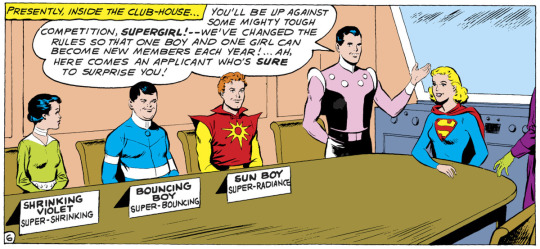
May 1961. The revelation in 1964 that the Brainiac was actually an android created an additional potential complication for Supergirl's love life. When she joined the Legion of Super-Heroes in 1961, she had met and dated Brainiac 5, who had explained that he was the villain's direct descendant:

The Brainiac retcon in SUPERMAN #167 rationalized this discrepancy by saying that the original android Brainiac briefly had a "son" as part of his disguise, and that Brainiac 5's actual ancestor was the human (well, Coluan) boy forced into the role of "Brainiac II":

Brainiac II didn't get a name in this brief initial appearance, but a 1965 "Meet the Legionnaires" text item in ADVENTURE COMICS #335 gave him the name "Vril Dox" and explained:
Having learned many of Brainiac's scientific secrets, he ran away; then, while his villainous foster-father went off on his espionage mission, which was to occupy many years, Vril used his knowledge to build a brain stimulator which raised his mind to a twelfth-level effector. Now he was smarter than the tyrannous computers and led his people in a revolt against the machines. Honored by the people he had freed, Vril Dox, alias Brainiac II, lived a long, happy life. Long, indeed—for the green-skinned inhabitants of that world have a life-span far greater than that of an Earthman. When he grew up, Vril married and became a father. He found that his brain-stimulator had affected his genes, so that his children inherited his twelfth-level-effector brain. His son Pran Dox, was nicknamed Brainiac 3. He in turn was the father of Kajz Dox (Brainiac 5), whose son, Querl Dox, became Brainiac 5 of the Legion of Super-Heroes. Thus it is that Brainiac 5 has a twelfth-level-effector mind, like the original Brainiac. With a mind twice as powerful as ordinary humans, Brainiac 5 can solve the most difficult problems in seconds.
This text item isn't credited, but it MIGHT have been written by E. Nelson Bridwell, who became Mort Weisinger's assistant editor in 1965. In any event, the name "Vril" was almost certainly borrowed from the 1871 Edward Bulwer-Lytton novel THE COMING RACE, where it refers to an "all-permeating liquid" that works kind of like the Force in STAR WARS. (That novel also fueled all manner of conspiracy theory occultism, and in 1988 was incorporated into DC continuity in Roy Thomas's YOUNG ALL-STARS. A long story.)
The circumstances of Brainiac II's eventual uprising were never directly shown in pre-Crisis comics, but the first three issues of L.E.G.I.O.N. '89 depict his overthrow of what are now called the Computer Tyrants of Colu. The L.E.G.I.O.N. and R.E.B.E.L.S. series also established that Vril Dox was not a nice guy:

The Legion of Super-Heroes villain Pulsar Stargrave, first seen in SUPERBOY #224, claimed at times to be Brainiac 5's father, but he also later claimed to be the original Brainiac, which later developments of the latter character made unlikely. The post-Crisis L.E.G.I.O.N. series reveals that Stargrave was neither, but was in fact an android body housing the minds of the Computer Tyrants of Colu whom Vril Dox and his comrades had previously overthrown. Whether that was true in pre-Crisis continuity is anybody's guess.
#comics#action comics#jerry siegel#jim mooney#edmond hamilton#curt swan#george klein#keith giffen#alan grant#barry kitson#mike decarlo#supergirl#braniac 5#querl dox#computer tyrants of colu#pulsar stargrave#colu#legion of super heroes#legion of superheroes#l.e.g.i.o.n#mort weisinger#brainiac
11 notes
·
View notes
Text

* ♱ : PROPHECY'S RAGGED & DIRTY. a private, selective writing blog for vertigo comics' 𝔧𝔬𝔥𝔫 𝔠𝔬𝔫𝔰𝔱𝔞𝔫��𝔦𝔫𝔢. headcanon based & reinterpreted for matt reeves' the batman. inspired by delano's & spurrier's comic run, se7en, constantine ( 2005 ) among 𝚘𝚝𝚑𝚎𝚛 𝚖𝚢𝚝𝚑𝚘𝚕𝚘𝚐𝚒𝚎𝚜. set within the occult noir genre. rules underneath the cut. this blog will contain sensitive topics & dark themes. ⎯⎯⎯ follow at your own risk.
ESTABLISHED june 2023 . . . REVAMPED sept 2023
( ♱ ) a study in: home is where the horrors begin, shaking hands still searching for a light, anarchy towards the narrative ( doomed as the false martyr ⎯⎯ 𝚢𝚘𝚞 𝚗𝚎𝚟𝚎𝚛 𝚊𝚐𝚛𝚎𝚎𝚍 𝚝𝚘 𝚝𝚑𝚒𝚜 ) hell's hungry & ready to devour / love all consuming as a selfish act, nothing's fair in love & war, the price to pay for power, uncanny depravities faced within a broken system, fundamental question posed: a cigarette last four minutes, a bottle of whiskey two hours, how bloody long can a man keep screaming?
◟ 🪦 carrd ... headcanons ... pinterest
♯ 𝒊. with the complexities of john as a character, his decisions being seen as 'morally grey', and generally the themes that come with the occult and noir genre, there'll be heavy mention of: religion, horror ( body + supernatural/demonic ), abuse ( child, institutional - alluded to but never explicitly written ), blood, violence, politics and the failures of government systems, death, grief, guilt, alcoholism, mental illness and occultism amongst others that may come up. please don't ever hesitate to message me if there's an error in my understandings of these topics as i'm constantly researching on some, and others are based of my own personal experiences. a tagging system will be in place ( e.g: ' trigger tw ' and ' trigger ' ) similarly with nsfw tags ( e.g: ' nsfw ' and ' nsfw / ' ) do let me know if there's any specifics you need otherwise.
♯ 𝒊𝒊. john will follow his main canon up to the family man storyline, there it'll diverge between ming doyle's 2013 run and vaguely the 2005 film ( with extreme creatively liberty, following the main storybeats and more-so inspired by the film's aesthetics ). dc's interpretation will mostly be ignored besides doyle's run and his canon relationship with oliver. written heavily with a mix of fincher's early work, matt reeves' the batman and 70s horrors. as his main fc is oliver jackson-cohen, constantine will be written as ethnically egyptian jewish + a man of colour but considers himself religiously secular. he wears a star of david as a means of sentimentality ( the only thing he has of his mother ) as a jewish writer myself, this is very important to note and any sort of intolerance towards it will be immediately hardblocked.
♯ 𝒊𝒊𝒊. as always, basic etiquette applies ( don't be a cunt ! ) this blog is mutuals only and intended be plot heavy, however, i'm always free and open to chat ooc either on ims or discord. shipping and exploring dynamics are always encouraged but do note that this must be discussed prior ( there are many faults he's gotta admit to, if death and betrayal doesn't comes first 💀 ) john is bisexual with neither preference.
♯ 𝒊𝒗. will absolutely not interact with genderbent muses, or muses that represent / explore harmful ideologies ( n/zis, r/cists, h/mophobes, ab/lists, etc ) i won't interact also with problematic, deceased or underaged fcs, those who write incest / stepcest, r/pe, non-con, antisemitism, or anything harmful towards minors. this blog is also 20+ for muns, due to the content's nature. also for my sake, i won't write with stranger things or teen wolf blogs.
♯ 𝒗. thank you for reading !! my name is livia, i'm twenty2, jewish with she + they pronouns living in the aest/gmt+10 timezone. my activity will fluctuate since i'm a full time film student and working, however i'm super excited to write about this miserable lil' git !! discord will be available on request but feel free to send memes, ask or flood my ims - they will always be wanted 🖤🖤
3 notes
·
View notes
Text
Our Fandoms, Sources, and ships
(work in progress)
fandoms:
Anime & Manga
Sailor Moon
(ships: muti, poly)
Yugioh
(ships: multi, poly)
80s/90s anime
Video Games
Silent HIll
(ships: Harry x Heather, f/o crush: James Sunderland)
Fatal Frame
Final Fantasy
(ships: Squall x Seifer)
Legend of Zelda series
(ships: zelda x ganon, zelda x link, link x ganon x zelda, ganon x dark link)
Red Dead Redemption series
(ships: John x Arthur)
Fallout
(ships: Courier x Benny, f/o crush: Doctor Dala)
Pokemon
Star Wars: KOTOR
(ships: Revan x Carth. f/o crush: Canderous Ordo)
Bioshock: Infinite
(ships: lutecest)
Detroit: Become Human
(ships: Hank x Connor)
Undertale/Deltarune
(Ships: Undyne x Alphys, multi, poly)
The Stanley Parable
(ships: Stanley x Narrator)
Mario Bros.
(ships: mario x luigi f/o crush: wario)
Elden Ring, Bloodborne
(ships: f/o crush: White Mask Varre)
Animal Crossing
(ships: f/o crush: Raymond)
indie/rpgmaker horror games (Ib, Mad Father)
Comics
Batman
(multiship/polyship, f/o crush: the riddler)
Sandman
(ships: dream x desire)
Archie Sonic the Hedgehog
TV shows & Cartoons
ABC’s Lost
(ships: sawyer x juliet, sun x jin, f/o crush: Ben Linus)
NBC Hannibal
(ships: Will x Hannibal)
Adventure Time
(ships: Bubblegum x Marceline)
Invader Zim
(ships: Zim x Dib)
Star Trek
(ships: multi, poly, f/o crush: Bones)
Beetlejuice
(ships: Beetlejuice x Lydia, f/o crush: Beetlejuice)
80s/90scartoons
Novels & Film adaptations
Lord of the Rings
(ships: gimli x legolas x aragorn, eowyn x grima, f/o crush: grima)
House of Leaves
(ships: navidson x karen)
William Gibson
Bruce Sterling
Twilight
Sherlock Holmes
(ships: Sherlock x John)
American Psycho
General
Monster High
Doll collecting
Occult & Paranormal
Noir/crime genre
creepypasta
cyberbpunk genre
Monster girls genre
Musicals genre
Kintype sources: Assume multi and poly shipping for all. NOTPs will be listen instead
Peter Pan
(NOTPs: Hook x Wendy. Peter x Anyone)
Slayers
NOTPs: Xelloss x Fillia)
Metal Gear
(NOTPs: huey x anyone)
GTA 5
Jem and The Holograms
Great Ace Attorney
Ace Attorney
(NOTPs: Manfred Von Karma x anyone)
Urusei Yatsura
Steven Universe
Digimon Adventure 01/02
Pathologic
Resident Evil
Fire Emblem
Danganronpa
Marvel Comics
Homestuck
Girls Frontline
Persona
6 notes
·
View notes
Text


https://www.teepublic.com/t-shirt/376177-awoke
10 notes
·
View notes
Note
If you could change anything in the Zodiac, what would you change? Wendy's symbol I would change to be either her axe or the axe on the sweater that Mabel gives her during Weirdmageddon 3. McGucket's symbol I would change to be the gold glasses which have green lenses that he uses in Season 2 or the round lens glasses he used in his younger years, when he was helping Ford with the Portal. Pacifica's symbol I would change to be a diamond, since we see her using a pair of diamond earrings during The Gulf War and she uses them again at the beginning of Northwest Mansion Mystery with a diamond colar or the front of the pocket mirror she uses in The Gulf War.
Sorry this took me a bit to get to! Family in the hospital and I've recently contracted covid (AGAIN rip) ^^;
The Zodiac, huh?
I really like your switch up for Wendy, and I have to agree I'd change it to the Axe just because I see her more as a symbol of strength which is usually tied to the image of the lumberjack - so it'd be a two fold meaning! Plus that's been shown to be her go to weapon in both the show and the comic book Lost Legends.
For Fiddleford, while I agree glasses fit him currently I'd personally prefer something more on the engineering side just because that's what he's known for. He likes to build and create, so I'd say like a wrench or hammer. Sure the dude is scholarly but let's be honest, he's not as scholarly as he used to be due to his trauma and how that's affected his mind. While still very much gifted and a genius I feel his talent for creation is really his strongest attribute.
Pacifica having a star is a good choice! Definitely has roots in canon as well as carries the implication of her being the rising star in her family/much needed change. But I'd prefer a compass! Just think it'd be really cool to see a compass pointed in the Northwest direction and would be an appealing design choice.
Gideon I'd REALLY like to change, though the pentagram fits the whole occult theme that is very heavily used in Gravity Falls and represents his tent of telepathy's symbol, I think the depiction of the cursed amulet (mentioned in journal 3) he carries would have fit better. I just feel that's more personalized in both it's meaning for how he's turned out personality wise (arrogant and spoiled) from having such power at a young age and as well as the burden of carrying consequences that come from that.
The rest of them I feel are pretty accurate and I guess I just would change those I mentioned to be more tied to the individual, so that it hits more of a prophesy that 'could only be carried out in a specific time and place', rather than having that openness for previous generations to have maybe the chance to use it if they'd found the correct people to fit those non-specified symbols.
Oh, and I'd chance Stan's back to the crescent! I liked that better than the redesign. I feel the redesign was a bit too goofy for me. At the end of the day it's confirmed to be a Shriner's hat, and the crescent fits when you see the full symbol for the Royal Order of the Holy Mackerel. Really upset me to learn they had been forced to make the change to avoid potential lawsuits. Who in the world can copyright a crescent?! Geez XD
1 note
·
View note
Text
KURT.
introduction: mutant, son of mystique and destiny, member of the superhero team called x-men (and, formerly, excalibur), kurt wagner (aka nightcrawler) was raised in the bavarian alps by a romani sorceress. not formally adopted by her, kurt spent most of his early life in a circus, where his "devilish" appearance was accepted instead of feared and mistrusted. there he displayed a natural talent for acrobatics and soon became the circus' star aerial artist. after a fateful incident involving the owner of the circus and a mob of men, kurt used his powers for the first time in order to escape, teleporting away from danger. when kurt was 20 years old, charles xavier rescued him from yet again another mob and offered him a place in the x-men.
25-30 y / o. what looks to be blue skin is actually a soft layer of fur covering his entire body and that, along with his tail and shining golden eyes with no pupils, definitely makes him stand out. he also has pointed ears and sharper than normal canines, akin to fangs. despite his average height (175 cm) and lithe frame, kurt sports solid muscles in his back, arms and tighs and his spine is extremely flexible.
notes. i've read some of the comics involving him, but not nearly all of them and god knows trying to keep up with marvel comics is out of my league. due to this i will keep his most relevant story beats while adapting the rest to fit with rp partners and personal headcanons.

+ powers & abilities
teleportation. minor levels of shadow manipulation to avoid being seen. capable of seeing in the dark.
prehensile tail. olympic level acrobat. skilled in hand to hand combat, though fencing is where he excels at. trained in martial arts.
weaknesses: regular diseases and injuries can afflict him; due to kurt being a neyaphem (ancient race of mutants with demonic appearances) angel blood is dangerous for him.


the choices we make, the chances we take, define us.
+ misc
(i) he is a staunch believer of god and adeheres to his message of compassion and hope. studied teology but never actually became a priest. (ii) he is in possesion of an astral blade (hopesword), which is also the physical manifestation of his own, never faltering, hope. the sword is stored into his body and allows him to undo certain spells (he restored his mother's memories), but it is implied to have a much greater power that has yet to be discovered. similar to the soulsword, created by his foster mother with fragments of his soul. (iii) can speak and understand various languages, but he still has a distinct german accent. (iv) he has only three digits for each hand and two toes for each foot.

CANON VERSE ROUTES,
default. as a successful and beloved superhero, kurt has finally found somewhere he belongs and people he can consider family, until he tragically dies to ensure the survival of the mutant race. in the afterlife, kurt encounters his presumed father azazel. after stopping his nefarious plans to attack paradise (with the help of his fellow x-men), he uses his own blood magic to bind him to earth, cutting him off from his armies. that allows kurt to go back to the world of the living. at a steep price: leaving his soul behind. dying and coming back to life takes a heavy toll on him and, save dire circumstances where his help is needed, he distances himself from the hero life. as a result, however, he starts to dabble in the occult more often, navigating the supernatural netherworld.
vigilante. when mutant kind's peace and very existence is shattered, leaving most of them lost and presumed dead, he is brainwashed by the anti mutant organization orchis and forced to publicly kill three heads of state, tainting mutant reputation against his will. disillusioned by these events and the costant warring between mutants and humans, kurt leaves behind his identity and dons one of spiderman's discarded suits to become the vigilante spinnenman (people seem to prefer calling him in more creative ways, such as.. hellcrawler and spidemon). he also reunites with one of his mothers (mystique) and learns the truth about the circumstances that led him to be raised by another woman in bavaria.
+ CROSSOVERS / AUS,
general fantasy. tba
urban fantasy. tba.
modern (non mutant). drama student. normal city life. complicated family issues. adopted by a german couple living in america.
alt modern (vicious). eo. fled bavaria after accidentally killing his foster brother. took refuge in a circus for a while but had to escape again when they discovered his powers and tried to cage and sell him.
& more available! always willing to throw ideas around to make interactions easier
1 note
·
View note
Text
Please read Spirit World! It's a 6 issue mini series that just ended that features Xanthe (a new Chinese non-binary character introduced in the last event, Lazarus Planet which you don't really need to read. They can use joss paper to create objects including a giant broadsword), Cassandra Cain (Bat Best Girl), and Constantine (the warlock/occult detective British dude who Zatanna hangs out with). It's by Alyssa Wong who is non binary themselves and is super cool (they also are doing Doctor Aphra for Star Wars). Dawn of DC has kind of overtaken Infinite Frontier post-Dark Crisis and that has given us a lot of good stuff! Really just about anything being published is worth trying out if it looks interesting! (Birds of Prey is awesome can confirm, but I am still butthurt about Batgirls being canceled Justice for StephCass!) Comics looks scary and over continuity-y but once you get into it, it's really not that confusing. A lot of the continuity stuff you can look up or really doesn't affect books outside of events. I'd say one of the big continuity heavy books (at least that I'm reading) is the JSA stuff (Justice League of America, Alan Scott: Green Lantern, and Jay Garrick: the Flash at least. Wesley Dobbs: Sandman is pretty self contained) cause that's tied into Flashpoint Beyond, Infinite Frontier (mainly Alan Scott coming out as gay) New Golden Age, and Stargirl: the Lost Children (all of which is worth a read but it is a lot I get).
Plus DC has a Justice League vs Godzilla vs Kong book out right now so what more could you ask for?
Also read Hawkgirl! It's by a trans female author!
Okay this misconception keeps coming across my dash and it drives me nuts because it means people are lumping two very different versions of the DC universe under one disparaging banner. So let me just say this to get it off my chest because I'm this close to shaking somebody:
The New 52 ended seven years ago in 2016.
That started a section of DC's history called "Rebirth" in which they started bringing elements of the pre-Flashpoint continuity back into the timeline. The first changes came in a big burst called Convergence -- which is how Jon Kent effectively manifested fully formed at 10 years old -- while other reintroductions like Kon-El, Bart Allen, Cass Cain, etc. were more gradual.
The original plan, being forced through by King of Bad Decisions Dan Didio, was that after ~4-5 Rebirth would give way to another full reboot known as 5G. I could go into detail about the plans but they're honestly not important to this post because Didio was (thankfully, finally) ousted from his role as publisher early in 2020, along with something like 80% of the higher-level editorial staff. DC had a complete creative turn-over at the start of the pandemic and completely changed directions as a result. The material being developed for 5G was retooled into the hypothetical future event "Future State" to buy the new staff time to pull together their new direction.
That new direction is called INFINITE FRONTIER. It started in 2021 and THAT is the era of DC comics we're in now. Infinite Frontier is an active push to bring back the pre-Flashpoint characters, as well as some pre-Crisis ideas and characters, while also keeping the few elements of the New 52 that people actually liked (like Jason Todd's more heroic characterization) and actively pursuing diversity initiatives both in creative staff and in creations. And outside of the big events, they're making a real effort to keep these comics short and self contained in the hopes that that'll make them more accessible. So it's actually really easy, if you read comics pre-Flashpoint and dropped off, to just pick up a series and go with the flow. Anything confusing is just a Google away.
Please, please don't make the mistake of thinking modern comics are as bad as the New 52 just because some people are butthurt their ship isn't getting canonized. There have been some really good comics made in the last few years that you should totally try! Spirit World, Monkey Prince and the entire We Are Legends line has been genuinely fantastic. The new Birds of Prey is shaping up to be a ton of fun. Dark Knights of Steel is an entertaining Elseworld. Urban Legends and Brave & the Bold have done some really fun things with shorter anthology books. One Minute War was a really fun Flash family event and everything Stargirl's done recently is liable to make you cry.
I'm begging people to give these comics a chance. It's just really sad to see them being dismissed out of hand.
#can we get a supergirl book going again though?#too much to recommend#marvel has She-Hulk#and miles#oh and new gwen book next month#kamala is a mutant now :(#but her mini is good#comics are so expensive though#rip me#dc comics#batman#bat family#superman#wonder woman#superheroes#new 52 had some good stuff#but yeah fair
564 notes
·
View notes